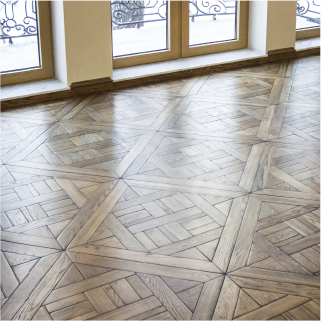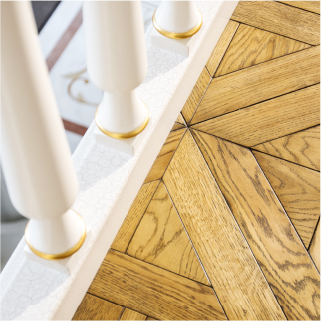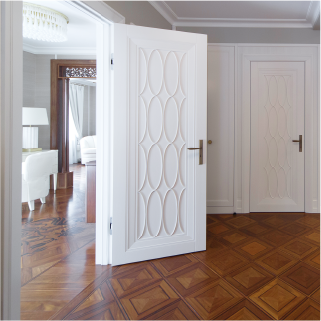Inspiring example
The compass rose at the centre of the room illustrates this world order, and the flawlessly organised environment around it, are testimony to the authority of the master. This environment does not follow an example; it sets one. It is inspires followers, while driving copiers into despair with its inimitability.
Iconic status
Over the course of its 350 year old history, the classical Versailles parquet pattern has become an iconic cultural asset; a brand, which in terms of its recognisability is comparable to the refinement of a diamond, Veuve Clicquot champagne, Coco Chanel’s little black dress and Aston Martin cars.
As with every outstanding icon – the Versailles pattern has flourished in the face of both changing fashions and revolutions. It was equally highly appreciated by followers of Louis XIV, post-revolution era industrialists and Art Nouveau philanthropists, who often bought authentic parquet from aristocrats who had fallen upon hard times, in order to pass it on as an heirloom from generation to generation.


